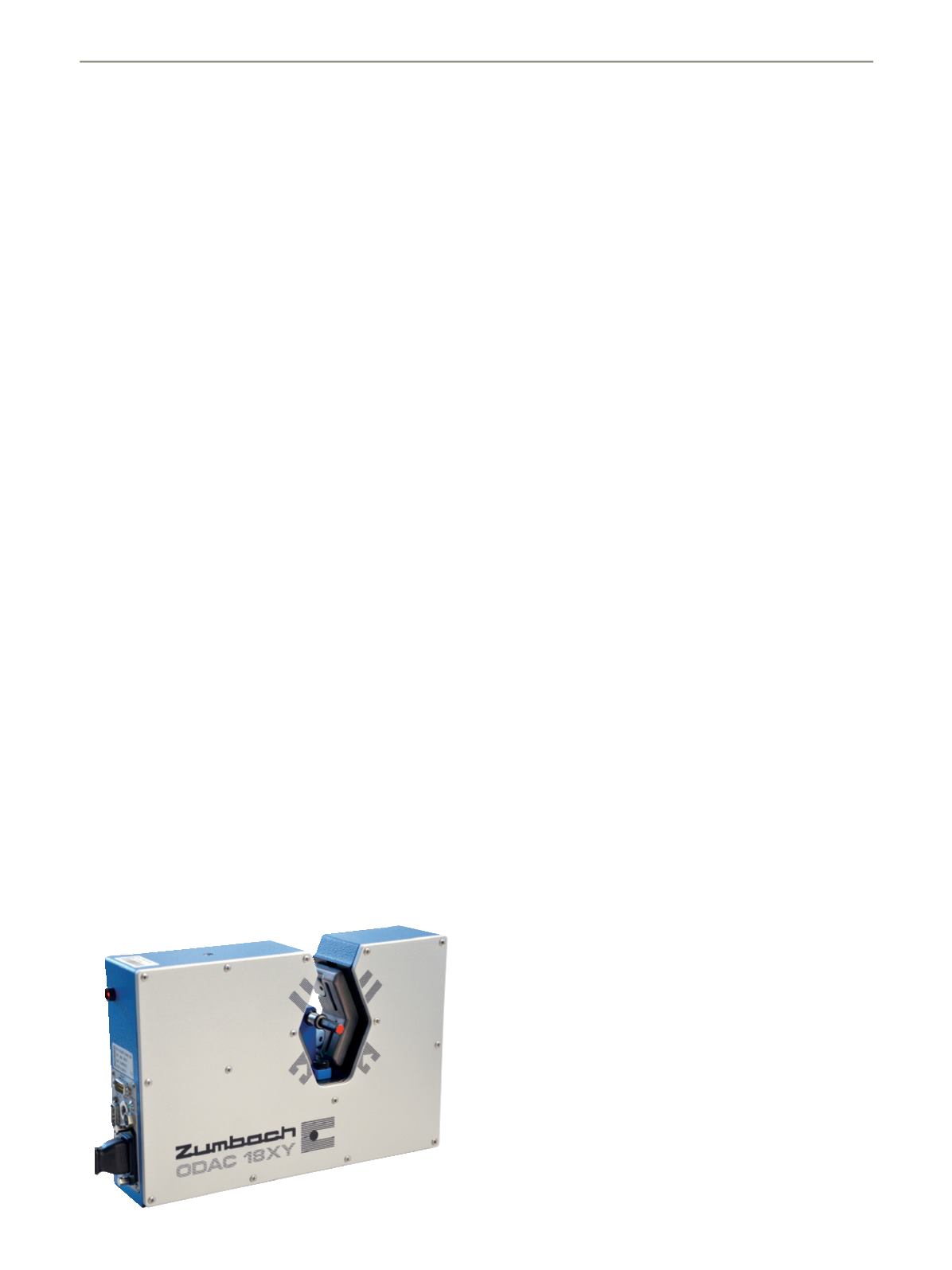

84
kompakt
Extrusion 7/2017
➠
ZUMBACH Electronic AG
www.zumbach.comn
Calibration in measurement technology means characteriz-
ing the measurement behaviour of a measuring unit by compa-
ring the indications provided by the unit with a known “mea-
surement standard” (a physical object) used in the calibration
procedure.
During the calibration, the measuring instrument is not subject
to changes, as opposed to adjustment where a measuring unit
is tuned or modified in order to minimize the measurement er-
rors or to guarantee that the measurement errors do not ex-
ceed predetermined bounds. Verification in legal metrology,
however, pertains to the examination and marking and/or is-
suing of a verification certificate for a measuring system. The
examining authority thus verifies whether the measuring unit
satisfies the corresponding legal prerequisites.
Unlike for legal verification, where the validity of a marking or
certificate is defined by law, the validity of a calibration interval
follows practical requirements such as manufacturer indicati-
ons, requirements of the applied quality standards, or company
internal and customer specific regulations.
Traceability and calibration hierarchy
: In order for measure-
ment results to be compared, they must be traced back to a na-
tional or international measurement standard to this purpose,
the display of the measuring must be compared with the mea-
surement standards in one or more stages. On each of these
stages a calibration is carried out with a measurement stan-
dard, which has been previously calibrated with a higher-level
measurement standard. According to the ranking of the mea-
surement standard – from a working or company reference
measurement standard to a national or international measure-
ment standard – there is a calibration hierarchy to be respected
by the organization performing the calibration. This stretches
from the in-house laboratory through accredited laboratories
up to the national metrological institute.
Correct Calibrations
: Different standards, regulations and di-
rective must be respected when carrying out calibrations. A
measurement unit must satisfy basic requirements before it can
be calibrated. One must also know and consider the physical
conditions under which a calibration is carried out.
(Self)compensation of Measuring Units Increases Accuracy of Measurements
Regulations are essentially applicable when a company decides
to respect a standard or directive or when it delivers products
that are subject to legal requirements (like in the medical or
transportation markets)
Standards for Quality Control – Statutory Regulations
:
Standards and directives, such as the ISO 9000 series, are be-
coming increasingly important for quality assurance in all indu-
strial nations. This standard explicitly requires, among other
things, to calibrate all test equipment that directly or indirectly
influences the quality of the product. This includes, for exam-
ple, test equipment that is used as reference measurement
standard during the production process.
Zumbach Electronic adheres to different directives and stan-
dards. The regulations of the FDA (American Food and Drug
Administration), for example, are important worldwide with
respect to international trading relations. The CFR (Code of Fe-
deral Regulation) requires “the calibration of instruments, ap-
paratus, gauges, and recording devices at suitable intervals in
accordance with an established written program containing
specific directions, schedules, limits for accuracy and precision,
and provisions for remedial action in the event accuracy and/or
precision limits are not met”. European legislation has similar
requirements.
Example of a Zumbach measuring unit – Calibration and
self-compensation functions of ODAC
®
Measuring Heads
:
Zumbach’s measuring units are calibrated using reference and
also working measurement standards which are certified by the
federal office for metrology
(www.metas.ch)or by accredited
laboratories. Each unit is supplied with a detailed calibration
protocol.
A regular check for measuring errors along with the correspon-
ding protocol can be carried out according to the customer re-
quirements. The regularity of these calibrations depends on the
customer specific requirements (internal regulations). The com-
pany recommend a verification of the measurement error every
12 to 24 months.
All the measuring heads of the ODAC
®
series have a self-com-
pensation function (Patent DE3111356), which makes a regular
calibration superfluous, except when components had to be re-
placed.
All the relevant parameters for accuracy are continuously moni-
tored by the measuring electronics and automatically compen-
sated. This is particularly important for counteracting possible
ageing effects of the scanner motor or possible long-term drifts
of the measuring electronics.
Documentation:
A calibration protocol presents the results of
the calibration and documents the traceability to a national
measurement standard for the considered physical units in ac-
cordance with the International System of Units (SI).
Picture: Typical ODAC
®
laser diameter measuring gauge
with a certified measurement standard used to calibrate the
device











